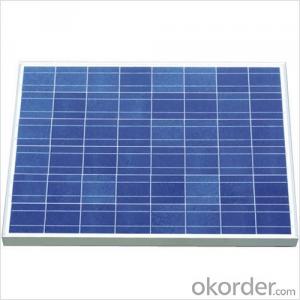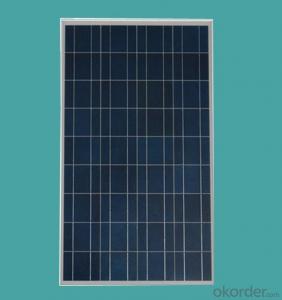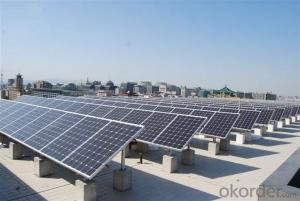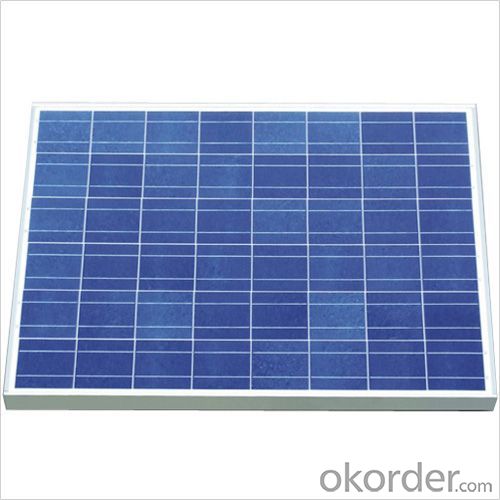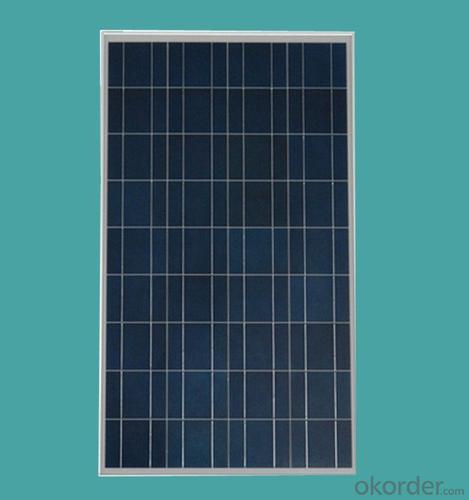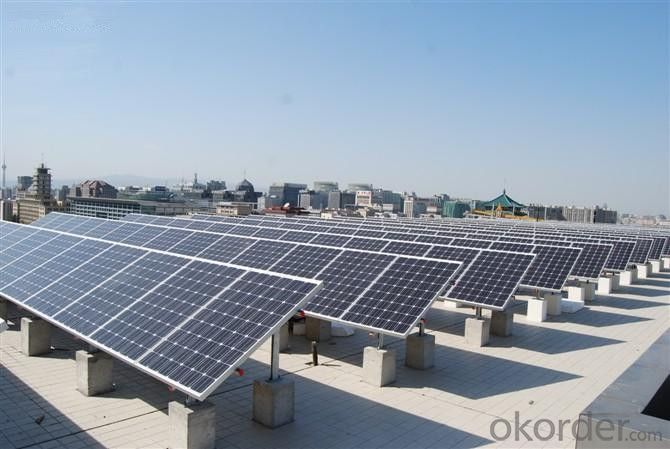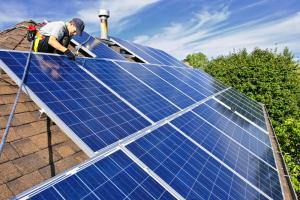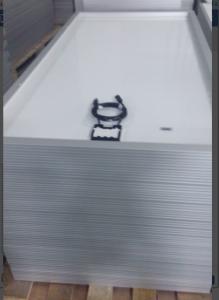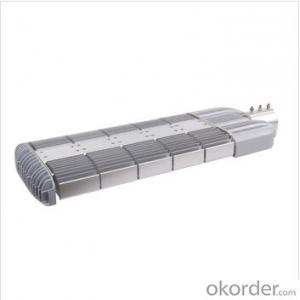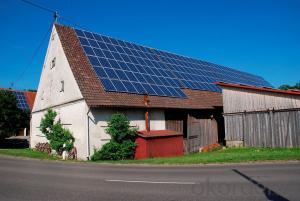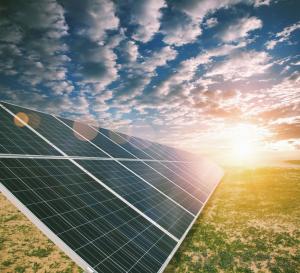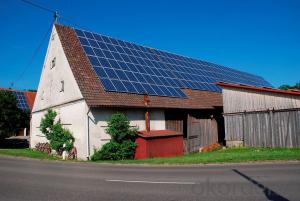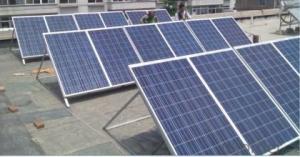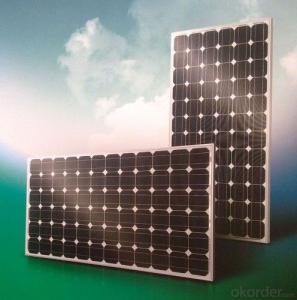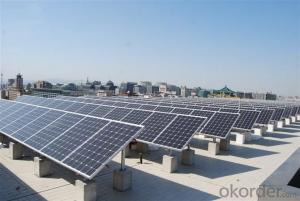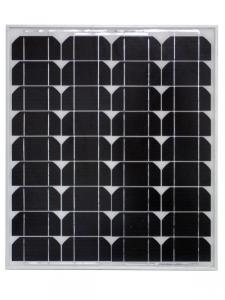Uni Solar Panels 310W Solar Panel Silicon Polycrystalline
- Loading Port:
- Nanjing
- Payment Terms:
- TT OR LC
- Min Order Qty:
- 200000 watt
- Supply Capability:
- 20000000 watt/month
OKorder Service Pledge
OKorder Financial Service
You Might Also Like
INTRODUCTION
This installation Manual contains essential information for the electrical and mechanical installation that your must know before installing CUSTOMER PV modules. This also contains safety information you need to be familiar with .All the information described in this manual are the intellectual property of CNBM and based on the technologies and experiences that have been acquired and accumulated in the long history of CUSTOMER. This document does not constitute a warranty, expressed or implied.
COMPONENTS
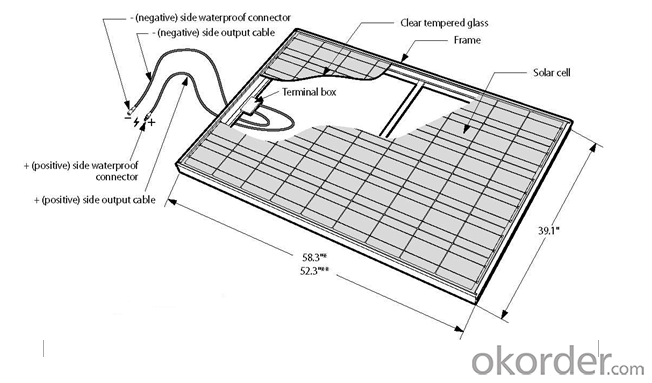
WORK PRINCIPLE
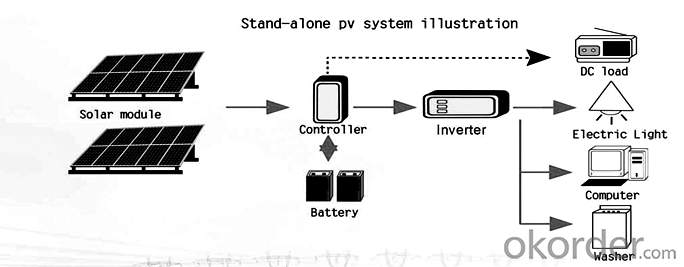
WIRING
To ensure proper system operation to maintain your warranty, observe the correct cable connection polarity(Figures 1&2) when connecting the modules to a battery or to other modules. If not connected correctly, the bypass diode could be destroyed.
PV modules can be wired in series to increase voltage. Connect wires from the positive terminal of one module to the negative of the next module. Figure shows modules connected in series .
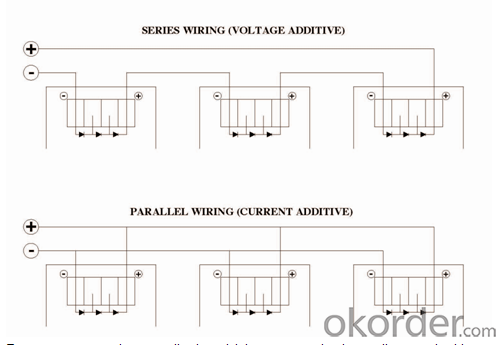
GROUDING
All PV models must be grounded by electrical connection of the module frames to ground. Please be careful in arranging the system ground so that the removal of one module from the circuit will not interrupt the grounding of any other modules.
The modules should be grounded to the same electrical point as described below.
Each PV module has a hole on the side frame of either a bolt, nut and washer grounding the module to the frame, a ground lug fastened by bolt or screw, or appropriate screw(hardware not provided).An example of acceptable ground connection using a bolt, nut and washer retaining a ground lug is shown in figure 3,in a connection of this type, the hardware(such as a toothed locked washer/star washer) must score the frame surface to make positive electrical contact with the frame. The ground wire must be considered within the requirement of local and regulation at the site of installation.
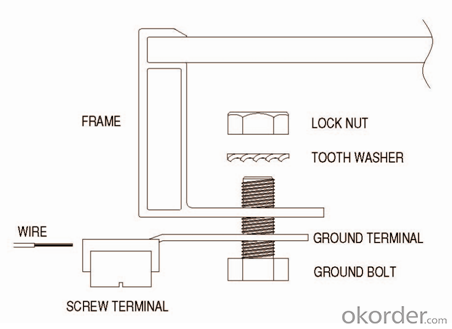
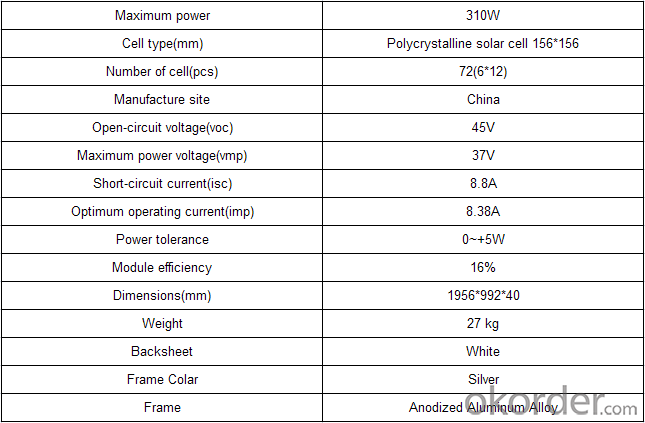
- Q: Can solar panels be used during a power outage?
- No, solar panels cannot be used during a power outage unless they are connected to a battery storage system. Without a battery backup, solar panels will also lose power when the grid goes down.
- Q: Hey guys :)Well I'm in the middle of doing my PSHCE coursework on sustainable energy, focusing on solar panels. I just wanted to ask you what your opinions are of them? Are they really worth it? Are they sustainable? Will they reduce our energy bills? Those sort of questions :)If you are interested in installing solar panels, please mention that, as it would be great! There's lots of information about them on this site ----
- Bing solar power in Germany. Solar power has an option of assisting in removing some of the burden during daylight, from power generation plants. Anything is a help. Plus they will continue to do it forever (at least a lifetime). But they are not the total answer. Like wind, limited to certain areas. Wave generation is another solution, but still limited to coastal areas. The current design of most supply grids does not allow transportation of power long distances. You want a real eye opener, Bing transportation line looses power grid and see how much energy is wasted, and the amount of carbon put into the air for these losses.
- Q: Hi, I am starting to get curious about the pros/cons of installing solar panels - has anyone done it and is it worth it?
- The trouble is that it is so expensive to have installed and as you say it will take many years before you actually start saving above what the installation cost was, I personally would not go ahead and make that sort of investment, it would be more profitable to keep the money in a building society, get the interest from it and use that to pay for your electricity but the main thing that I have against solar Panels is that unless you stay in that house for at least twenty five years you will not reach the point where you are saving and to capitalise on it you would have to stay there for many years more, so you will not have the option of moving house without losing your investment and at the moment having solar panels does not increase the value of the property, it is just a good selling point, when you buy your new house, you would probably have to start all over again and then because of the years will never live long enough to reap any benefit from it.
- Q: Can solar panels be installed on flat surfaces?
- Yes, solar panels can be installed on flat surfaces. While it is more common to install solar panels on angled surfaces or rooftops to optimize their exposure to sunlight, flat surfaces can also be used. In such cases, mounting systems or support structures are used to tilt the panels at an angle that maximizes their efficiency.
- Q: Can solar panels be installed on historic homes or buildings?
- Yes, solar panels can be installed on historic homes or buildings. However, the installation process may require careful planning and consideration to ensure that the panels do not compromise the historical integrity of the structure. Some guidelines and regulations may need to be followed, such as placing the panels on less visible areas or using panels that blend well with the building's design.
- Q: I'm looking to mount a solar panel to the top of my 2003 Pontiac Montana and was wondering how i could do it without any screws? Magnets maybe?
- What mark said about shade is true, but take into account that the solar panel will absorb most of that heat. That is how they work they absorb the energy (heat) from the sun and transfer it into useable power.
- Q: Can solar panels be used in areas with high pollution?
- Yes, solar panels can still be used in areas with high pollution. While pollution can reduce their efficiency to some extent, solar panels can still generate electricity even in polluted areas. However, it is important to note that excessive pollution may result in a decrease in their overall performance and require more frequent maintenance to keep them clean and functioning optimally.
- Q: Can solar panels be used in areas with high levels of vandalism?
- Yes, solar panels can be used in areas with high levels of vandalism. However, it is important to implement additional security measures, such as installing anti-vandalism devices, using tamper-proof mounting systems, and employing surveillance systems to deter potential vandals. Regular maintenance and quick repairs are also crucial to ensure the optimal functioning of solar panels in such areas.
- Q: What is the working principle of solar panels?
- Based on the above considerations, silicon is the most ideal solar cell materials, which is the main reason for solar cells to silicon-based. But with the continuous development of new materials and related technology development, to other village-based solar cells are increasingly showing attractive prospects.
- Q: Can solar panels be used to power a construction site?
- Yes, solar panels can be used to power a construction site. They can provide a clean and renewable source of energy to run the equipment and machinery needed for construction activities. By utilizing solar power, construction sites can reduce their reliance on fossil fuels and lower their carbon footprint.
Send your message to us
Uni Solar Panels 310W Solar Panel Silicon Polycrystalline
- Loading Port:
- Nanjing
- Payment Terms:
- TT OR LC
- Min Order Qty:
- 200000 watt
- Supply Capability:
- 20000000 watt/month
OKorder Service Pledge
OKorder Financial Service
Similar products
Hot products
Hot Searches
Related keywords
